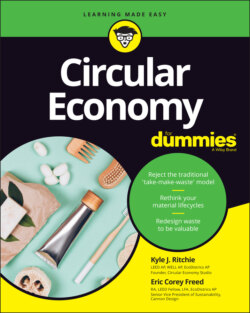Читать книгу Circular Economy For Dummies - Eric Corey Freed - Страница 78
Cradle to cradle
ОглавлениеIf most products follow a simple linear process where they’re born, they’re used, and then they die (they’re discarded), then that’s what you would call a cradle-to-grave approach to manufacturing. Cradle-to-cradle advocates for a truly closed loop system where a product is born, is used, and then gets reborn as the same or better product. It’s a process of birth and rebirth, or cradle to cradle.
This concept was put forth in Cradle to Cradle: Remaking the Way We Make Things, a 2002 book by William McDonough (an architect) and Michael Braungart (a chemist). McDonough and Braungart radically questioned (with great success) how we view waste— in fact, Chapter 4 of the book, “Waste Equals Food,” is one of the core pillars of the circular economy. It shows how nature has no concept of waste because everything in nature eventually becomes food or nutrients for something else.
If you view the earth as a closed system (which it is) and waste as missed allocations of valuable resources that need to be redesigned, then the vision of cradle-to-cradle consists of healthy products that can be infinitely recycled.
To achieve this goal, cradle-to-cradle follows these three core principles:
Eliminate the concept of waste. Collect and recover value for any materials put into the system.
Use renewable energy. The sun provides more than we need.
Celebrate diversity. Both social and technological diversity is the key to innovation, and it supports the biodiversity and health of ecosystems.
The Cradle to Cradle Products Innovation Institute (https://www.c2ccertified.org) has produced a certification for products that meet its rigorous standards.
